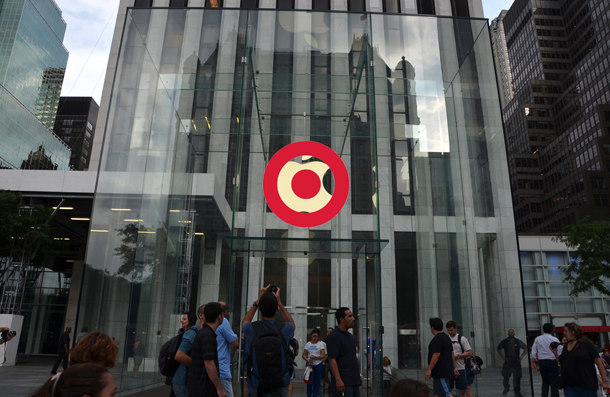Target Is Latest Retailer To Think “Being Like Apple” Will Stop Showrooming

(Apple Store photo: afagen)
The Minnesota-based retail chain is testing a minimalist redesign emphasizing interaction with products at a number of its stores, reports the Minneapolis Star-Tribune.
“Guests are looking for more interactive ways to make purchasing decisions about the latest technology,” explained a Target rep about the redesign.
To us, this seems to be a counter-intuitive move. If bargain-hunters are going to retail stores to do some showrooming — getting first-hand experience with a product that will eventually be bought from an online seller — we don’t see how this will convince more people to pay more to buy at a bricks-and-mortar store. If anything, it gives them even more reason to be confident about the products they ultimately buy elsewhere.
Some shoppers say that the minimalist design approach means customers aren’t getting all the information they would need in order to make an educated purchase at the store.
“I wish they would compare the plans better,” said one customer who had gone to a redesigned Target looking to buy a new phone. “But I did like the way I could feel and play with the phones.”
But the store is apparently betting that some “reverse showrooming” will happen. That’s when the customer does her research online and then buys the product in a store because they want to get it immediately.
This idea works for some companies, like Apple, because their computers and wireless devices are generally the same price at the store and online. Smartphones and tablets also often cost the same regardless of where they are purchased, and stores like Target and Best Buy are increasing the amount of floor space given over to these devices. But can they compete against Amazon when someone comes in to buy a new phone and a TV, especially when that TV is cheaper online?
JCPenney attempted an Apple-store-esque redesign under the lead of short-time CEO Ron Johnson, and we all know how that turned out, but it wouldn’t be fair to assume a similar fate awaits Target’s experiment as these redesigns are targeting to very different markets.
For now it’s a wait and see. If the experiment is successful, Target will roll the redesign out to additional stores.
Want more consumer news? Visit our parent organization, Consumer Reports, for the latest on scams, recalls, and other consumer issues.

